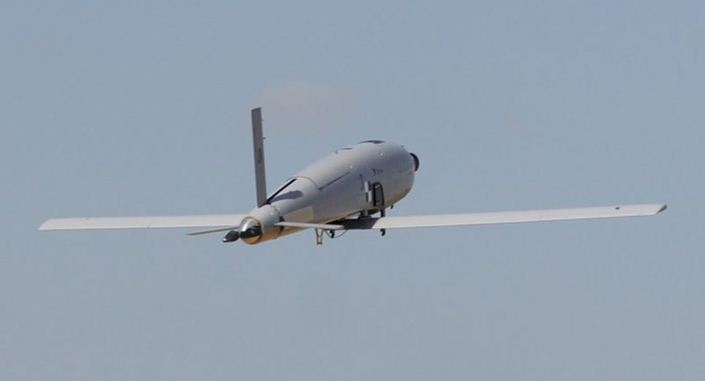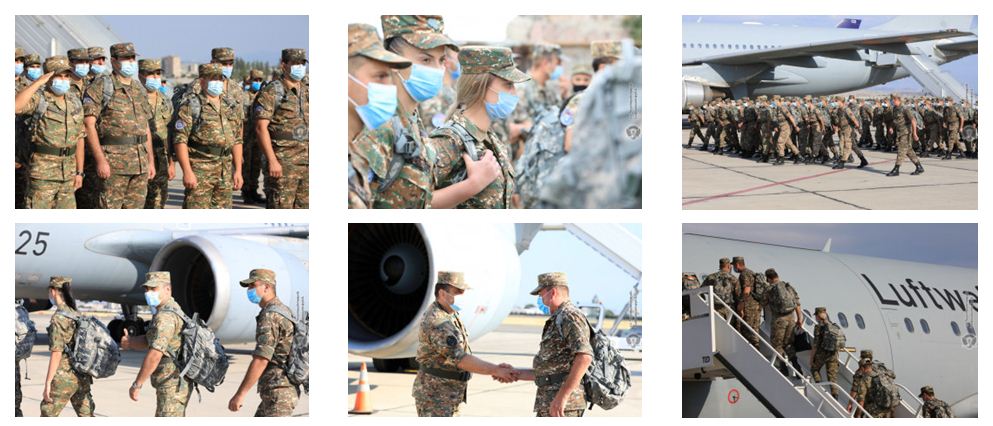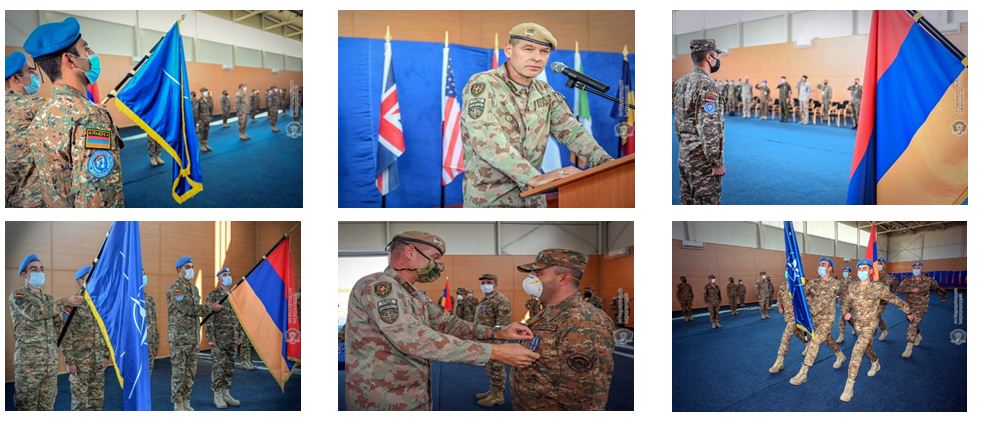Woodrow Wilson, Joseph Stalin and a myriad of policy failures and crimes that resulted in Azerbaijan, Turkey, Israel and international terrorist attacking Armenians
Քաղաքականություն
26.10.2020 | 12:58
On 27 September 2020 Azerbaijan started a war against the Republic of Artsakh (also known as Nagorno Karabakh) and also targeted civilians in Armenia. This is not the first war Azerbaijan has initiated against Armenians. There were also clashes in April 2016 and border incident in July 2020. The September 2020 military escalation by Azerbaijan is a full-scale war. Over the last decade Azerbaijan has acquired a lot of hardware to achieve military superiority over Armenia. Azerbaijan has many more tanks, armored vehicles and artillery than allowed by the Treaty on Conventional Armed Forces in Europe.
In 1990, European countries, the United States of America and the Union of Soviet Socialistic Republics (USSR) signed the Treaty on Conventional Armed Forces in Europe (CAFE). CAFE was negotiated during the final years of the Cold War. It set equal limits on the amount of tanks, armored combat vehicles, heavy artillery, combat aircraft and attack helicopters that NATO and the Warsaw Pact could deploy between the Atlantic Ocean and the Ural Mountains. The CAFE Treaty was designed to prevent either alliance from amassing forces for a blitzkrieg-type offensive, which could have triggered the use of nuclear weapons in response. NATO and the Warsaw Pact were each limited to 20,000 tanks, 30,000 armored combat vehicles, 20,000 heavy artillery pieces, 6,800 combat aircraft and 2,000 attack helicopters with the total amounts distributed between its members.
With the dissolution of the Soviet Union and the Warsaw Pact and after the Czech Republic, Hungary, Poland in 1999, and Bulgaria, Estonia, Latvia, Lithuania, Romania, Slovakia and Slovenia in 2004 joined NATO, Russia terminated its participation in CAFE in 2007 (ratified on 8 July 1992), citing security concerns.
According to CAFE, all three newly independent countries of the former Soviet Union in the South Caucasus – Armenia, Georgia and Azerbaijan – each are entitled to 220 tanks, 220 armored combat vehicles, 135 artillery pieces, 100 combat aircraft and 50 attack helicopters. However, according to Global Firepower, Azerbaijan substantially exceeds the limits of certain equipment imposed by CAFE.

As of 24 October 2020, the Armenian military has already destroyed about 600 Azerbaijani armored vehicles and tanks.
On 29 July 2020, Armenia terminated military inspections by Turkey on its territory because “Turkey has been resorting to unprecedented threats against Armenia and unilateral support to Azerbaijan”. The 9th Army corps of Turkish 3rd field army, the largest army of Turkey, are concentrated on the Armenian border and have about 350-370 tanks, 700 artillery units. These quantities substantially exceed the amounts Armenia is entitled to have under CAFE.
The aggressiveness of Azerbaijan is based on its financial capabilities elevated by revenues from oil and unequivocal support from Turkey. In recent years Israel, together with Turkey and Russia, became a major supplier of military hardware to Azerbaijan.
Israeli military technology supplied to Azerbaijan
In 2012 The Times of Israel reported about the sale of military technology by Israel to Azerbaijan for USD 1.4 billion. Azerbaijan acquired drones and short-range ballistic missiles from Israel.
Over 2016-2020 Azerbaijan used Israeli produced Harop, Orbiter 1K, Skystriker and Hermes900 unmanned aerial vehicles or systems (UAV or UAS or drones) against Armenians.
Harop by Israel Aerospace Industry (IAI) has an endurance of 9 hours and 200km communication.

In February 2019 Azerbaijan signed a two year USD 13 million contract with Aeronautics Group to acquire Orbiter 1K “suicide” drones with 2.5 hours endurance and 100km mission range.

Skystriker by Elbit Systems is a fully autonomous UAS that can locate, acquire and strike operator-designed targets with a 5kg warhead installed inside the fuselage.

In an ongoing war against Armenians of Artsakh, Azerbaijan also used USD 30 million worth Hermes 900 from Elbits System, a new generation multi role UAS used for intelligence, surveillance, target acquisition and reconnaissance that have 30-36 hours endurance.

Use of drones is not something novel. In August 2012 CIA drones killed a warlord’s family and a Taliban chief. In January 2015 a US drone strike killed a Pakistani warlord. In October 2017 a US drone strike killed 14 ISIS militants in Afghanistan. In September 2019 a US drone stroke of suspected “Islamic State” militants killed 30 civilians and injured 40 others as they were collecting pine nuts in a forest. In November 2019 the US lost a drone over Libya’s capital. In January 2020 a top Iranian general was killed by a US drone strike in Baghdad. However, in the past drones were used to hit individual targets.
In the war against Armenians Azerbaijan, Turkey and Israel elevated the use of drones to a massive scale. In August 2017 Israeli Aeronautics Group attempted to bomb an Armenian military site on behalf of Azerbaijan during a demonstration of its suicide drones. The Israeli government imposed a suspension on exports by Aeronautics Group. However, later the Israeli government revoked the export license suspension, which allowed the company to sign an agreement with Azerbaijan in February 2019. The sheer number of Israeli made drones used in the war against Armenians and the fact that in 2017 experts from Israel operated the suicide drone targeting Armenian military sites makes Israel a participant on the side of Azerbaijan in the war against Armenians. According to some estimates, on the first attack on Armenian positions on 27 September 2020, Azerbaijan used approximately 1000 drones. As of 24 October, the Armenian military has downed more than 200 of them.
In the ongoing war against Artsakh, Azerbaijan also used Israeli produced LORA (Long Range Artillery) to hit civilian targets. LORA is actually a short-range ballistic missile that can hit targets as far as 430km away. Taking into consideration that Armenia is at most 200km from East to West, and 360km from North to South, there is no point in Armenia and in Artsakh that enemy short-range ballistic missiles cannot hit. The Metsamor nuclear power plant is only a couple of kilometers away from the Turkish border. In July 2020, the spokesperson of the Ministry of Defense of the Azerbaijan publicly threatened to launch a missile attack against the Armenian nuclear power plant.
Azerbaijani Laundromat. Acquisition of weaponry from Israel was used not only to increase military capabilities, but to channel funds to organizations that according to Azerbaijani Laundromat may have been involved in money laundering and terrorism financing.
Over 2012-14 the German bank Deutsche Bank submitted several reports to US authorities signaling that Israel Aerospace Industries, Israel’s largest aerospace and aviation manufacturer transferred at least USD 155 million to two companies that were reportedly used as a secret slush fund for Azerbaijan’s kleptocratic regime: USD 116 million was transferred to Jetfield Networks (founded in New Zealand in 2009 and incorporated in Marshall Islands in February 2012) and USD 39 million to Larkstone Ltd (incorporated in Estonia). Deutsche Bank officials suspected that the above-mentioned payment of USD 155 million might have been linked to money laundering or terror financing because the original deal did not include a provision about payment to any intermediary. In 2017 the Organized Crime and Corruption Reporting Project (OCCRP) reported that Jetfield was the third biggest contributor to a US 2.9 billion international money laundering operation known as the Azerbaijani Laundromat.
In 2009, Israel signed the OECD Convention on Combating Bribery of Foreign Public Officials in International Business Transactions and regularly submits reports on the issue. The Convention criminalizes bribery of foreign government officials.
Instead of using billions of dollars generated from the sale of oil to raise the quality of life of its citizens, the Azerbaijani dictator spends oil revenues on modern military hardware triggering an arms race, engaging international terrorists to fight against Armenians, and destabilizing the South Caucasus.
Azeri dictator Aliev enslaved his own people and now is trying to enslave the Armenian population of Artsakh. Kleptocratic rulers of Turkey and Azerbaijan are trying to exterminate Armenians and the state of Armenia. There is large volume of evidence to prove this. E.g., in 2005, at a meeting with a municipal delegation from Bavaria, Germany, Baku Mayor Hajibala Abutalybov said: ‘‘Our goal is the complete elimination of Armenians. You, Nazis, already eliminated the Jews in the 1930s and 40s, right? You should be able to understand us.’’ On 4 August 2004, in a “Zerkalo” article the spokesperson of the Minister of Defense of Azerbaijan Ramiz Melikov “clarified” that “Within the next 25 years there will be no state of Armenia in the South Caucasus.”
Where are the roots of current situation? The roots of the current problems can be traced back 100 years when in 1915, the government of Young Turks resolved to deport the entire 1.75 million Armenian population of Ottoman Empire and started driving them out from their homes, massacred them or they marched until their death. Turks deprived Armenians of the right to live in the Western part of their historical homeland. After the bolsheviks came to power in Russia, Armenia declared independence on 28 May 1918. On 10 August 1920 Armenia signed the Treaty of Peace between the Allied and Associated Powers and Turkey according to which:
Article 89
“Turkey and Armenia as well as the other High Contracting Parties agree to submit to arbitration of the United States of America the questions of the frontier to be fixed between Turkey and Armenia in the vilayets of Erzerum, Trebisond, Van and Bitlis, and to accept his decision thereupon, as well as any stipulations he may prescribe as to access for Armenia to the sea, and as to the demilitarization of any portion of Turkish territory adjacent to the said frontier”, and
Article 90
“In the event of the determination of the frontier under Article 89 involving the transfer of the whole or any part of the territory of the said Vilayets to Armenia, Turkey hereby renounces as from the date of such decision all rights and title over the territory so transferred. The provisions of the present Treaty applicable to territory detached from Turkey shall thereupon become applicable to the said territory”.
The US Senate refused to take on the responsibility for the mandate for Armenia that just got independence after couple of hundred years of oppression under Ottoman rule. President Woodrow Wilson announced projected boundaries that ceded to Armenia most of the provinces of Erzurum, Trabzon, Van, and Bitlis, however failed to take on responsibilities related to the young Armenian state entrusted to the USA according to the Treaty of Sevres. Mustafa Kemal Ataturk repudiated the Treaty of Sevres and after receiving military aid from bolshevik Russia initiated an attack on the Greeks.
After Kemal succeeded against the Greeks, France and Italy withdrew their troops from Asia Minor and Trace leaving unarmed Armenia alone face to face with a huge Turkish army. The situation escaalated further as Turks received weapons and ammunition from the bolsheviks. In September 1920 Turks under Ataturk attacked Armenia and by November took over Kars and Alexandropol.
The Bolsheviks also attacked Armenia from the East. On 29 November 1920 the Red Army entered Armenia. The orchestrated attack by the Turks from the West and the bolsheviks from the East was too much. The young Armenian state was not able to organize resistance and surrendered.
On 2 December 1920 by the Treaty of Alexandropol, (Armenian town Gyumri at present) renounced all pre-1914 Turkish territories and Kars and Ardahan, recognized that there were no Armenian minorities in Turkey (because Armenians were massacred or deported in 1915 during the Genocide) and agreed to creation of autonomous Turkish state in Nakhichevan.
After the establishment of the Soviet regime in Armenia, on 30 November, 1920, the Revolutionary Committee of Azerbaijan (Azerbaijan Revcom – the main bolshevik instrument of power) recognized Nagorno Karabakh, Zangezour, and Nakhijevan, as inseparable parts of Armenia. The National Council of the Azerbaijan Soviet Socialistic Republic (SSR) proclaimed Nagorno-Karabakh as an integral part of the Armenian SSR. Based on the statement of the Azerbaijan SSR and the agreement between the governments of Armenia and Azerbaijan from June of 1921, Armenia also declared Nagorno-Karabakh as its integral part. Armenian and Azerbaijani media published the text of the decree issued by the Government of the Armenian SSR (“Baku Worker” organ of the Central Committee of the Azerbaijan Communist Party, June 22, 1921). Thus, a legal confirmation of the unification of Nagorno-Karabakh with Armenia took place. This was the last legal act on Nagorno-Karabakh during the communist regime that was adopted according to the requirements of international law and norms. On 4 July, 1921, the plenary session of the Caucasian Bureau of the Communist Party of Russia convened in Tbilisi, Georgia, reconfirmed inclusion of Nagorno-Karabakh in Armenian SSR.
However, to please its Turkish “friend” Mustafa Kemal Ataturk, Joseph Stalin initiated the transfer of Nagorno-Karabakh to newly created Azerbaijan. On the next day, 5 July 1921, Stalin forced the revision of the decision and inclusion of Nagorno-Karabakh in Azerbaijan SSR.
This was a decision adopted by the Communist party of bolsheviks of Russia. It violated the international law on two dimensions: (1) The Communist party of Russia was not a state body, (2) Russia was a third party on the issue related between Armenia and Azerbaijan and was not an unbiased arbiter, because was interested in “bribing” Turkey to promote communist revolution in the East.
“Having regard to the historic status of the autonomous region of Nagorno-Karabakh (80% of whose present population is Armenian) as part of Armenia, to the arbitrary inclusion of this area within Azerbaijan in 1923 and to the massacre of Armenians in the Azerbaijani town of Sumgait in February 1988”, in 1988 the European Parliament supported “the demand of the Armenian minority for reunification with the Socialist Republic of Armenia” and called also upon Soviet authorities “to ensure the safety of the 500 000 Armenians currently living in Soviet Azerbaijan and to ensure that those found guilty of having incited or taken part in the pogroms against the Armenians are punished according to Soviet Law”. In September 1990 a 133 scholars, writers, scientists, political leaders and artists from Wesleyan, Rennes, Heidelberg, Brown, Frankfurt, Johns Hopkins, North Caroline, McGill, Berkley Universities and other institutions expressed their profound indignation over barbaric pogroms of Armenian in Azerbaijan, alerted the international public about the continuing danger of racism, stressed that pogroms of Armenians repeated in several locations in Azerbaijan over 1988-1990 indicate that “these tragic events are not accidents or spontaneous outbursts” and demanded from the Soviet authorities and the “international community condemn unequivocally these anti-Armenian pogroms”. According to 2009 census, 217 Armenians live in Azerbaijan, of which 104 in Baku. Thus since 1988 when the European Parliament adopted the above Resolution about 380 000 Armenians have either been exterminated during pogroms of Armenians in Sumgait, Baku, Kirovabad and other populated areas, or expelled from Azerbaijan. Artsakh cannot be part of Azerbaijan.
Nowadays the international community refers to “territorial integrity” to legalize the crimes Joseph Stalin committed against Armenia and Nagorno-Karabakh.
The irony of the situation is that nowadays Turkey is trying to revise the borders. After the Treaty of Sevres the international community signed the Treaty of Lausanne (1923). While Armenia signed the Treaty of Sevres, it did not sign the Treaty of Lausanne because it was divided between Turkey and Armenia and did not exist as an independent state. Some analysts believe that Erdogan wants to revise the borders established by the Treaty of Lausanne and restore the borders of Ottoman Empire because considers the Treaty unfair for Turkey. In 2017 the Greek President Pavlopoulos even had to reject any proposal related to changes to the Treaty of Lausanne. If there is anything that needs to be revised, it is the recovering of the broken rights of Armenians.
Why did Stalin so favorably treat Azeris and how did Azerbaijan emerge? On 16 March 1921 the bolsheviks signed the Treaty of Moscow and transferred to Turkey the lands that were supposed to be part of newly independent Armenia, as well as the cities of Kars and Ardahan. The Soviet Union was the first country to recognize Ataturk’s government. Stalin was trying to spread revolution around the world and according to him Turkey was a channel to do revolution in Islamic countries. However, there was no state of “Azerbaijan” in the Caucasus until the bolsheviks established it in early XX century. Where did it come from?
Ngram Viewer lets you find and visualize how words and phrases have developed and been used over time using the 30 million print books Google has scanned working with libraries located around the world as its dataset. You can search the cases of use of words “Armenia” and “Azerbaijan” in the database of 30 million printed books since 1500 AD (see the picture below). The blue line indicates the share of word “Armenia” and the red line indicates the share of word “Azerbaijan”.

People who wrote books in the late Middle Ages did not use the word “Azerbaijan” at all because it simply did not exist. It is a creation of Joseph Stalin whose “national” policies have been criticized intensively.
The 1897 census in the Russian Empire and 1926 census in the Soviet Union did not identify any “Azeri”. The 1937 census in the Soviet Union registered “Azeri” first time.

How is it possible? It was too easy in the USSR: one stroke of a pen and in 1937 millions of Turks became “Azeris”. In 1937 Stalin’s statisticians “reclassified” 1.7 mln people recorded as Turks in 1926 (there was no “Azeri” in 1926 records). Now it must be clear to everyone what Erdogan means when he states “One nation, two states”.
It is one nation indeed. Armenia is clutched by Turkey from the East and the West. Armenians are the heirs of survivors of Genocide of Armenians in Ottoman Turkey. There were massacres of Armenians in different Azerbaijani cities over 1988-1990, including in Sumgait and Baku. Several areas of Asia Minor and South Caucuses that were populated by Armenians in the past are de-Armenianised. Armenians do not feel secure in this neighborhood and are not going to attempt another co-existence under Turkish rule. Independent Artsakh is the only option not to have ethnic cleansing.
In his address to the Armenian people, Prime Minister Nikol Pashinyan compared the solution considered by number of countries for conflict related to Karabakh to 1938 Munich “territories for peace” Agreement “when the European powers allegedly surrendered Czechoslovakia to Germany for the sake of peace”. Similar to the Munich Agreement, the bolsheviks transferred substantial territories of Armenia to Turkey to promote international revolution in the Islamic world. Although European powers conceded Czechoslovakia they did not manage to bring peace to Europe. Bolsheviks conceded Armenian territories to Turkey but did not succeed promoting communism in Islamic world. Up until today Armenians are paying the price of communist adventure and Stalin’s crimes.
Armenia is an active contributor to NATO-led operations of which Turkey is a member. Armenian Armed Forces are helping NATO to assure peace in Kosovo (since 2004) and Afghanistan (2009). On 13 August 2020, a new group of Armenian peacekeepers left for Afghanistan. The Armenian military contingent is carrying out a peacekeeping mission as part of the International Security Assistance Force in Afghanistan.


In early-August 2020 the Armenian military contingent carrying out a peacekeeping mission in Kosovo handed the shift to the new group of the Armenian peacekeepers.

Armenian military fulfils its international commitments despite the war at home.
In Conclusion
The Armenian people are sacrificing their most valuable asset – the life of their youth – to stop the crazy dictators of Turkey and Azerbaijan from carrying out another genocide. The International community needs to help Armenia to stop terrorists and stop the war. There are some demands to stop weapons supplies to both sides of the conflict. Taking into consideration the fact that over the last decade Azerbaijan stockpiled a large amount of sophisticated military hardware, an embargo on the supply of weaponry now will mean that the international community leaves Armenia with an enemy that is armed to the teeth.
People in Artsakh are facing excessive suffering. Engagement of Islamic mercenaries complicates the situation and puts the region at the brink of humanitarian catastrophe that may spread to Southern Russia and Northern Iran. By sticking to the principle of territorial integrity in cases when the current situation is the direct result of the mess created by criminal decisions of Joseph Stalin the international community is legalizing the crimes committed by Joseph Stalin 100 years ago.
There is an urgent need to come up with a new security system in Europe and develop a new Treaty on Conventional Armed Forces in Europe. It should protect smaller countries from any aggressive attitude of bigger ones and set limits not only on the number of tanks, armored combat vehicles, heavy artillery, combat aircraft and attack helicopters but also on number of different types of UAV/UAS and on so called long-range artillery or short-range ballistic missiles capable hitting targets 430km away. Armenia is fighting a new type of war where the enemy engages drones extensively. Once these pieces of military hardware are equipped with artificial intelligence, it will have a devastating effect on human lives not only in the South Caucasus, but around the world.
Artak Kyurumyan


























